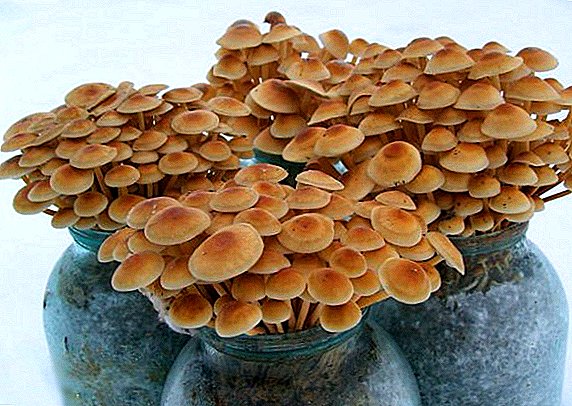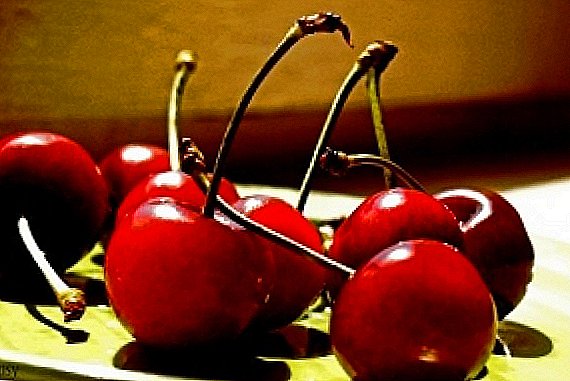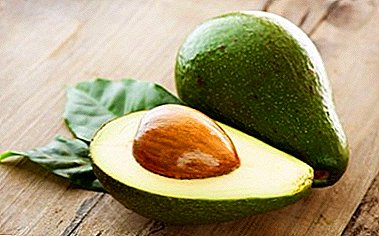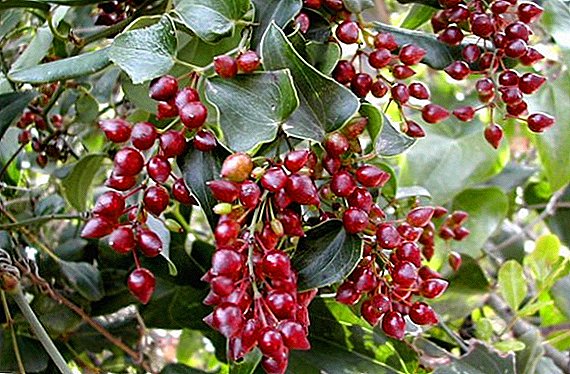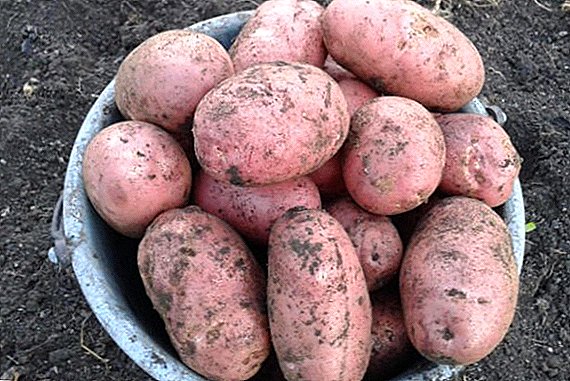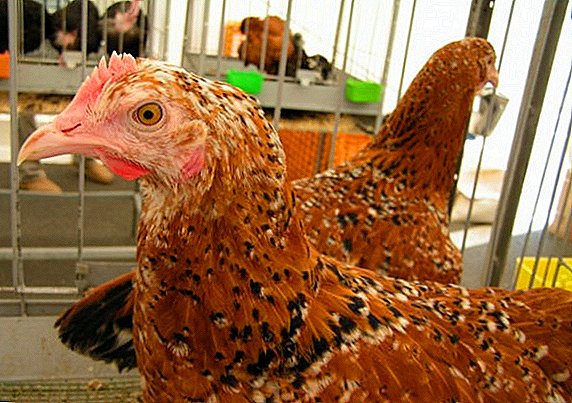 As you know, homemade chickens by appointment are divided into two main categories: some are bred for meat, others for eggs. However, for a small household, the most interesting are the universal breeds of chickens that can be used in both of these areas. Leningrad calico belongs to this category of birds.
As you know, homemade chickens by appointment are divided into two main categories: some are bred for meat, others for eggs. However, for a small household, the most interesting are the universal breeds of chickens that can be used in both of these areas. Leningrad calico belongs to this category of birds.
The history of the breed
As you can guess from the name of the breed, it owes its appearance to the efforts of breeders from the branch of the All-Union Scientific Research Institute of Genetics and Cultivation of Farm Animals located in the city on the Neva River.
Read also about such meat and egg breeds of chickens as: Rhode Island, Orlovskaya, Pervomaiskaya, Moscow, Kuchinsky Jubilee and Yurlovskaya vociferous.
In general, there are three varieties of the Leningrad breed of chickens, which were bred in stages:
- Golden gray universal breed, the result of crossing Leggorn and the local striped chicken, appeared in the late 70s - early 80s. last century.
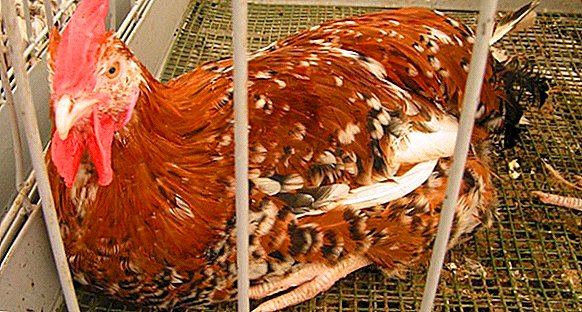
- White, a larger chicken meat was obtained in the same period by multiple blood transfusions of meat and egg Australorps to white Leghorn, and after fixing the desired genetic properties of adding them to the “own” golden-gray cross-country of St. Petersburg selection.
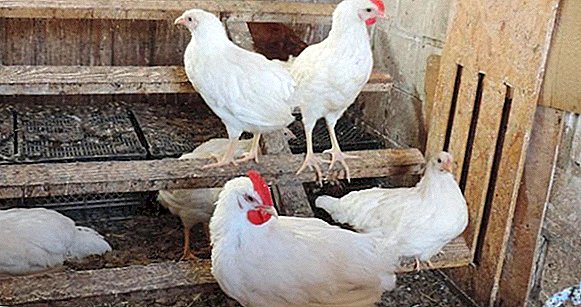
- Calico, which has the brightest exterior and increased productivity indicators due to the crossing of the two above-mentioned Leningrad species with meat and egg New Hampshire, Australorp and Poltava clay. In this cross-breeding breeders tried to combine the highest possible indicators of the body weight of a bird and the weight of its eggs, which is the main advantage of meat and egg hens.
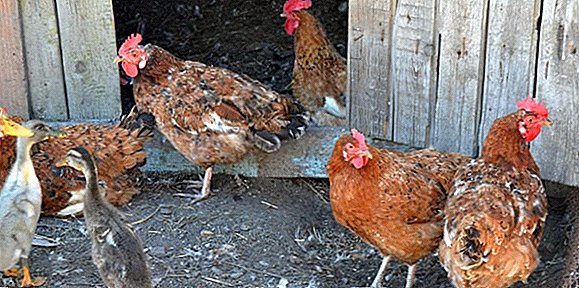
Description and features
In appearance and features of the character of the Leningrad calico the best way collected features of all the breeds that took part in the formation of its gene pool.
Check out such decorative breeds of chickens as: Araucana, Ayam Tsemani, Hamburg, Chinese Silk and Sebright.
Exterior
The “business card” of a bird is its unusually elegant three-colored color, which is a mix of white, black and reddish colors that are combined in each feather. In general, this chicken can be considered as decorative, although in reality it is not bred for beauty at all.  The calico of Leningradka calico is compact, the dimensions are small, all parts of the body are proportional and are not even without a certain elegance. The head is small, the neck is also not too high, the back is straight, and the chest is rather wide. The pink scallop has a leaf-like or pinkish form, the cockerel is more developed, the earrings are red or pink, the skin is a pale yellow color, and the legs are darker. The tail is small, the wings are well developed and tightly pressed to the body.
The calico of Leningradka calico is compact, the dimensions are small, all parts of the body are proportional and are not even without a certain elegance. The head is small, the neck is also not too high, the back is straight, and the chest is rather wide. The pink scallop has a leaf-like or pinkish form, the cockerel is more developed, the earrings are red or pink, the skin is a pale yellow color, and the legs are darker. The tail is small, the wings are well developed and tightly pressed to the body.
Weight indicators
Chickens of this breed have a body weight of 2.1-2.3 kg, with an average of 400 g more males.
Did you know? The largest breed of chickens in the world are considered to be American giant black birds, bred at the end of the twentieth century in the USA (New Jersey) by crossing Orpington, Langshan and Dark Brahma. Roosters of this breed weigh up to 7 kg (for comparison: the average weight of a goose, initially a larger bird than a chicken, is only 4.1 kg).It is worth saying that of the three named Leningrad breeds, calico is the smallest. Thus, golden-gray birds have a mass of 2.5 kg in chickens and 3.3 kg in roosters, and white meat even larger: the hen gains 2.9 kg, the rooster - up to 4 kg. However, the chintz variety, according to farmers, wins from its "companions" in the taste of meat, from this hybrid it is very light, tender and nutritious.
Find out how much chicken lives: home, layer, broiler.
In addition, the bird is distinguished by its high viability and very fast weight gain: laying hens reach 1.5 kg already at the age of eight, cockerels - a little later.
Character
Another advantage of the breed is a very calm and balanced character. These birds perfectly find a common language not only among themselves, but also with other representatives of birds, thanks to which they can be kept in a common poultry house. This valuable property is used with pleasure by the owners of small farms.  However, appeasiveness of calico chickens does not mean at all their lethargy and passivity. Birds frolic with pleasure on the open range, seek out all sorts of delicacies in the land, curiously explore the territory, without undertaking any fights or tantrums typical of many other breeds.
However, appeasiveness of calico chickens does not mean at all their lethargy and passivity. Birds frolic with pleasure on the open range, seek out all sorts of delicacies in the land, curiously explore the territory, without undertaking any fights or tantrums typical of many other breeds.
Puberty and egg production
Layers reach sexual maturity by six months, during this period they begin to steadily nest, although the first egg-laying can occur as early as four months. In terms of egg production, the calico variety occupies an average position among three representatives of the Leningrad breed: during the year, one chicken can carry an average of 160 to 180 eggs (in golden-gray, this figure reaches 200 pieces, in white - only 150). However, many farmers note that with good care, an indicator of two hundred eggs per year for a calico heel is also quite achievable.
In order for the laying hen to please the poultry farmer with its productivity, it is necessary to know what are the peculiarities of the content of the hens, what to feed them and why it happens that the chickens rush badly.
An important indicator is also the preservation of stable rates of egg production throughout the year. The color of the shell is light brown, the average weight is 58 g, the maximum is 60 g. A distinctive feature of the eggs of this breed is a bright orange yolk of a very large size, although the egg itself is on average slightly smaller than that of the golden-gray companion. Also note the very high taste qualities of the eggs of this hybrid.
Hatching instinct
The incubation instinct of these chickens is very well developed, they not only closely monitor their own clutch, but are also ready to fulfill this duty for representatives of less “responsible” breeds, which is also successfully used by small breeders. 
Did you know? One of the most unusual breeds of chickens in the world is considered to be Chinese silk. Her feathers are more like fur, but the most amazing thing is under them. The skin, bones, internal organs, and even the meat itself of this bird have a bluish-black color! The most interesting thing is that Chinese silk is not a hybrid, it is a completely "natural" breed, which also has a very ancient history. Despite the fact that the bird belongs to decorative breeds, its amazing meat (however, like eggs) is considered a delicacy and is very expensive.It must be said that hybrid breeds of chickens very rarely retain a pronounced incubation instinct. In most cases, a different hen or incubator has to be used for breeding crosses. Leningrad calico in this sense is a successful exception. For this pleasant feature, the breed is sometimes lovingly called the "home incubator".
Feeding ration
In nutrition, the Leningrad calico is no different from other representatives of the species. All the basic rules applicable to the diet of feeding chickens meat and egg direction, fully apply to this hybrid. 
Chickens
During the first 12-16 hours after the birth of chickens is better not to feed. Before leaving the native shell, the nestling eats the remains of food stocks in the egg and does not feel hunger. Moreover, statistics show that the chickens who were starving for the first 24 hours of life survived better than their fellows, whom they had begun to feed earlier.
Important! Most sources indicate that the best food for a chicken in the first days of its life is, however blasphemous it may sound, boiled egg yolk. Recent studies refute this assertion, indicating that eating one’s own food is too fat a diet for a tiny stomach of a newly hatched bird. Therefore, it is better to use corn flour as a "first dish".
 Further, up to the fifth day of life, chicks can be fed with boiled hard-boiled and mixed with raw semolina yolk, special feed for chickens with the gradual addition of boiled and chopped nettle, wheat or barley groats, pureed boiled root vegetables, as well as kefir and grated soft cottage cheese. Then the food is gradually transferred to a larger fraction, it adds all the new components characteristic of the diet of an adult bird.
Further, up to the fifth day of life, chicks can be fed with boiled hard-boiled and mixed with raw semolina yolk, special feed for chickens with the gradual addition of boiled and chopped nettle, wheat or barley groats, pureed boiled root vegetables, as well as kefir and grated soft cottage cheese. Then the food is gradually transferred to a larger fraction, it adds all the new components characteristic of the diet of an adult bird.You will probably be interested to know what it takes to feed the chickens on the first day of life.
By the chicks reaching three months of age, they are already fully transferred to the "common table" with their parents. During the first week of life, chickens are fed every two hours, then the number of feedings is reduced to seven per day and gradually, as they grow older, they are taken to the adult feeding regimen (3-4 times a day).
Adult chickens
Special combined feeds are suitable for feeding adults, which are sold in a ready-made form, but you can also use leftovers from your own table in combination with other components necessary for poultry. The last option, of course, is much cheaper and therefore in the household is the most preferred. 
In the formation of the diet in this case should be guided by the following proportions:
- grain (corn, rye, barley, wheat, oats, peas) - 58%;
- meal or meal of sunflower - 17%;
- fish or meat and bone meal - 16%;
- feed fat - 3%;
- fodder yeast - 5%;
- mineral supplements, including table salt - 1%.
Did you know? For the formation of the shell and the provision of calcium for the egg itself, one hen during the year uses up to 500 g of this element, which is more than 20 times more than the reserves that the bird accumulates in its body (calcium mainly is deposited in the tubular bones). It is for this reason that in order to ensure normal productivity, a chicken needs at least ten times more calcium (per kilogram of weight) than a dairy cow.In the diet of all chickens bred for the purpose of obtaining eggs, calcium should be present in sufficient quantities. The bird can satisfy the need for this element by pecking small shells or pebbles during free-range, but in the case when there is no such possibility (when keeping chickens in cages or in the winter period), chickens should definitely get food chalk as additives. , ground egg shells, mono- or dicalcium phosphates.
 Since the second direction of using calico breed of chickens is meat, the content of protein feed in their diet should also be very high - not less than 14% of the total volume.
Since the second direction of using calico breed of chickens is meat, the content of protein feed in their diet should also be very high - not less than 14% of the total volume.Conditions of detention
Leningrad calico does not require special care and, subject to the elementary requirements for cleanliness, temperature and other elementary conditions of the content provide a very high survival rate.
Requirements for the room
Like any poultry, Leningrad calico chicken needs dryness and lack of drafts. At the same time, the room where the bird is kept should be sufficiently insulated and have good ventilation. The optimal temperature inside the chicken coop is in the range from + 23 ° C to + 25 ° C, however, the breed adapts quite easily to colder or, on the contrary, hotter environmental conditions. To ensure high and stable egg production, it is important to ensure that artificial light is available in the hen house so that the length of the daylight day is at least 12 hours.
Read also about how to keep chickens in the winter season.
For these purposes, it is necessary to provide additional lighting at the rate of 4-6 watts per square meter of the room. With regard to the size of the coop, it is necessary to take into account the active nature of its tenants. "In crowded, but not mad" - this is not about the Leningrad calico. The hens' livable and docile nature can only demonstrate if there is a sufficient amount of “personal space”, therefore more than five birds per square meter are undesirable. Also, equipping the chicken coop, you need not forget to build nests for laying eggs, placing them in the most secluded corner of the room and lining a warm bed of hay or sawdust.  The best material for the floor in the house is wooden boards. They perfectly keep heat and at the same time are eco-friendly. Having organized comfortable perches for chickens, in this case it is possible to do without bedding at all (at least during the warm season), which will save not only finances, but also time for cleaning the chicken coop.
The best material for the floor in the house is wooden boards. They perfectly keep heat and at the same time are eco-friendly. Having organized comfortable perches for chickens, in this case it is possible to do without bedding at all (at least during the warm season), which will save not only finances, but also time for cleaning the chicken coop.
Walking yard
The content of the Leningrad calico chickens involves the obligatory free-walking of birds in the open air. During such walks, birds not only air their feathers and “warm up”, but also replenish their diets with green and protein food, looking for worms and various insects in the ground - very important and at the same time one of the most difficult positions in the organization of feeding of chickens.
So that the birds do not disperse, do not scatter and do not cause irreparable damage to the garden, garden or flower garden, they need to organize a small walking yard, fencing it with a 1.5 meter fence and providing inside a sheltered place for sun protection where the drinking bowls, shell baths and a nest should be placed for laying eggs. 
How to endure winter cold
The bird, bred in the northern capital, tolerates the winter cold quite easily, so even at sub-zero temperatures (of course, if the thermometer does not fall below -15 ° C) you should not deprive the chickens of the pleasure of walking in the fresh air. However, in order to maintain stable egg production rates, it is necessary to provide in the hen house that the temperature should be maintained at a level not lower than + 12 ° C.
Important! In an unheated room, birds will survive, but will not be carried.In addition, for the winter in the house, a thicker litter should be used (especially on a dirt or concrete floor), adding peat to it for additional heat production and increasing the amount of hay or sawdust base to ensure maximum moisture absorption.
Advantages and disadvantages
Leningrad calico has a lot of undeniable merits, among which it is worth to highlight:
- ability to perfectly adapt to different climatic conditions (can easily tolerate both cold and heat);
- good health and resistance to major diseases characteristic of poultry;
- high rates of survival (in adult birds they make up 80%, in chickens even more - up to 96%);
- lack of nutrition and content;
- early maturity (rapid weight gain and early onset of egg production);
- excellent nutritional and taste qualities - both meat and eggs;
- high productivity;
- good incubation instinct;
- bright decorative exterior.

Speaking of deficiencies, it is usually noted:
- not very large sizes (characteristic, however, for all hens of meat and egg direction);
- relatively low egg production rates (inferior to Leningradskaya golden-gray);
- difficulty in acquiring (among the three Leningrad crosses is the least common).
These qualities allow us to consider the bird as the best option for a small home farm, where colorful and bright chickens with a balanced character can also become a real decoration of the yard. Именно по этой причине начинающим птицеводам есть смысл потратить время на поиск цыплят именно этой породы для разведения, - она однозначно того стоит!





